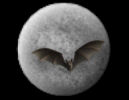
Meade Forum Message | |
| Forums: |
Atm ·
Astrophotography ·
Blackholes ·
Blackholes2 ·
CCD ·
Celestron ·
Domes ·
Education
Eyepieces · Meade · Misc. · God and Science · SETI · Software · UFO · XEphem |

 |
|
 |
||||
|
|
||||||
Be the first pioneers to continue the Astronomy Discussions at our new Astronomy meeting place... The Space and Astronomy Agora |
| Re: LX200 Polar Alignment Advice
Forum List | Follow Ups | Post Message | Back to Thread Topics | In Response To Posted by Daniel Johnson on October 8, 2002 12:46:43 UTC |
|
I have no experience with the field derotator, but I chose not to buy it, even though it sounds mighty convenient--your concerns about back focus, etc., were among my reasons. Also,I sometimes do photography through a good short-tube refractor to get a wide field, and use the LX200 to guide it. At times I may choose to offset the refractor and the LX200 by a degree or two, in order to find a better guide star. I didn't know whether the field derotator would work well for that (maybe so, but I didn't want to risk it). I bought a wedge made by Ken Milburn of Bonney Lakes Astro Works( http://home1.gte.net/kmilburn/page2.html )--expensive and a long wait, but worth it.
|
|
|
| Additional Information |
|---|
| About Astronomy Net | Advertise on Astronomy Net | Contact & Comments | Privacy Policy |
|
Unless otherwise specified, web site content Copyright 1994-2025 John Huggins All Rights Reserved Forum posts are Copyright their authors as specified in the heading above the post. "dbHTML," "AstroGuide," "ASTRONOMY.NET" & "VA.NET" are trademarks of John Huggins |